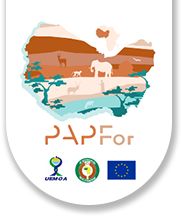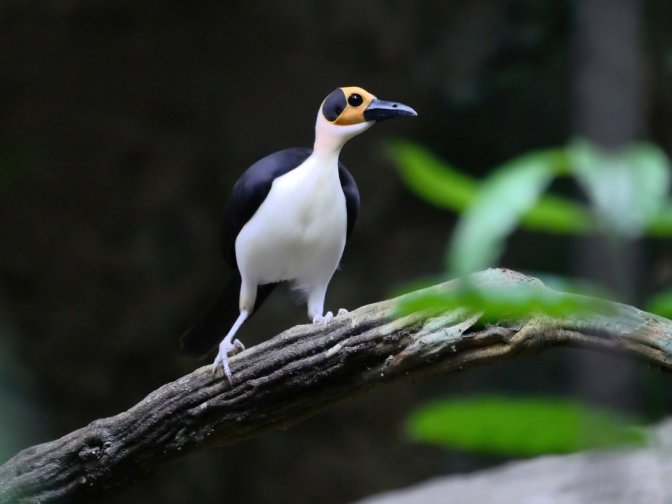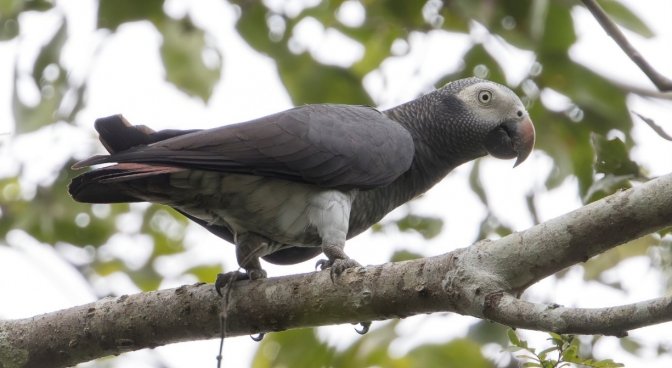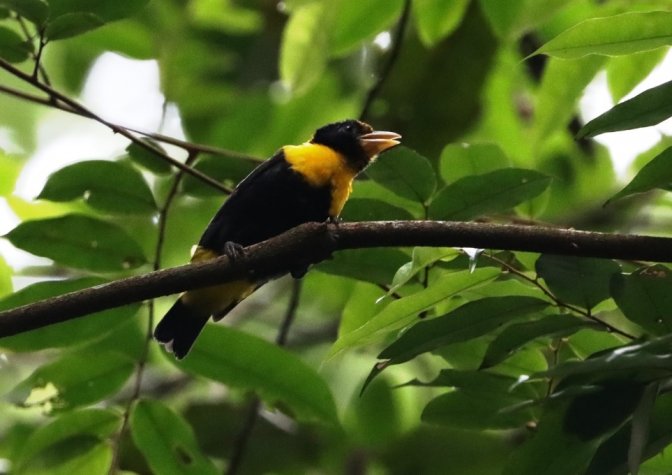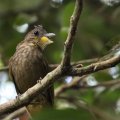Home / Guinean forests / Characteristics / The biodiversity / Animals / Birds
Birds
There are almost a thousand species of birds in and around the forest zones of West Africa, or almost half of all species in sub-Saharan Africa. The Guinean forests therefore represent a major stock of avian diversity. This high number of species includes mainly breeding species, but also some migratory species that take refuge in West Africa for a few months each year, fleeing either the winter in Europe or the dry season in other African regions.
In addition to this wealth, the forests also contain some unique species. In fact, not counting the 20 or so mountain species confined to the island of Bioko and the border zone between Cameroon and Nigeria, there are 38 bird species endemic to the Guinean forests.
| Common name | Nom scientifique |
|---|---|
| White-breasted Guineafowl | Agelastes meleagrides |
| Ahanta Francolin | Pternistis ahantensis |
| Timneh Parrot | Psittacus timneh |
| Rufous Fishing Owl | Scotopelia ussheri |
| Blue-moustached Bee-eater | Merops mentalis |
| Brown-cheeked Hornbill | Bycanistes cylindricus |
| Yellow-casqued Wattled Hornbill | Ceratogymna elata |
| Yellow-footed Honeyguide | Melignomon eisentrauti |
| Little Green Woodpecker | Campethera maculosa |
| Melancholy Woodpecker | Dendropicos lugubris |
| Fire-bellied Woodpecker | Chloropicus pyrrhogaster |
| Fanti Saw-wing | Psalidoprocne obscura |
| Western Wattled Cuckooshrike | Lobotos lobatus |
| Baumann’s Greenbul | Phyllastrephus baumanni |
| Green-tailed Bristlebill | Bleda eximius |
| Grey-headed Bristlebill | Bleda canicapillus |
| Western Bearded Greenbul | Criniger olivaceus |
| Bulbul crinon | Criniger barbatus |
| Finsch’s Flycatcher Thrush | Stizorhina finschii |
| White-tailed Alethe | Alethe diademata |
| Forest scrub robin | Cercotrichas leucosticta |
| Sierra Leone Prinia | Schistolais leontica |
| Sharpe’s Apalis | Apalis sharpii |
| Black-headed Rufous Warbler | Bathmocercus cerviniventris |
| Kemp’s Longbill | Macrosphenus kempi |
| Nimba Flycatcher | Melaenornis annamarulae |
| Ussher’s Flycatcher | Muscicapa ussheri |
| West African wattle-eye | Dyaphorophyia hormophora |
| Red-cheeked wattle-eye | Dyaphorophyia blissetti |
| Rufous-winged Illadopsis | Illadopsis rufescens |
| Yellow-headed Picathartes | Picathartes gymnocephalus |
| Buff-throated Sunbird | Chalcomitra adelberti |
| Red-billed Helmetshrike | Prionops caniceps |
| Western square-tailed drongo | Dicrurus occidentalis |
| Velvet-mantled drongo | Dicrurus atactus |
| Copper-tailed glossy starling | Hylopsar cupreocauda |
| Gola Malimbe | Malimbus ballmanni |
| Red-fronted Antpecker | Parmoptila rubrifrons |
The 38 species endemic to Guinea’s low- and medium-altitude forests.
Some of these species are emblematic and have cultural or tourist value, such as the Yellow-headed Picathartes (Picathartes gymnocephal). See its identity sheet.
See its identity sheet.
Other emblematic species of the Guinean forests include the Timneh parrot (Psittacus timneh), a cousin of the Grey parrot but rarer; it is on the IUCN’s list of endangered species. It is found only in the forests stretching from Guinea to Côte d’Ivoire.
Hornbills (Bucerotidae family) are a group of large birds that play an important role in Guinean forests, as they eat many fruits and are great dispersers of tree seeds. There are 10 species of hornbills in the forests of West Africa, two of which are endemic, the Brown-cheeked hornbill (Bycanistes cylindricus) and the Yellow-casqued wattled hornbill (Ceratogymna elata).
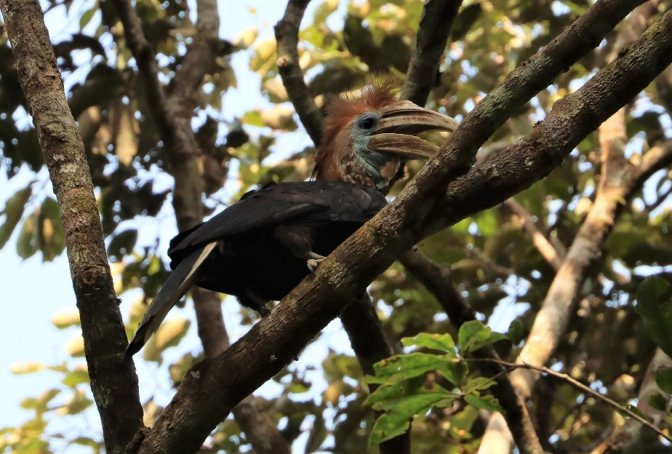
With no fewer than 18 species, the diversity of cuckoos is exceptional in West Africa. Many are very discreet and only reveal their presence through their song, which is often very typical. Such is the case of the Olive long-tailed cuckoo (Cercococcyx olivinus), which lives exclusively in the canopy of primary forests.
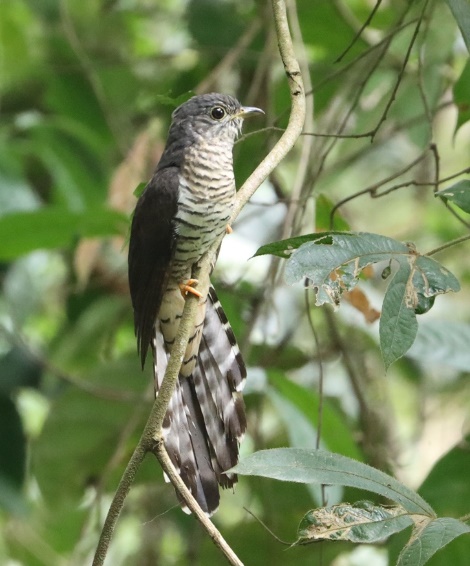
With more than 20 species, the bulbuls (Pycnonotidae family) are one of the most typical groups of birds in the forests of Central and West Africa. The vast majority are exclusively forest-dwelling, and no fewer than five species are strictly endemic to the Guinean forests.
The forests of West Africa are also a refuge for a large number of small, mainly insect-eating birds, including Apalis, Camaroptera, Eremomela, etc., all members of the vast Cisticolidae family.
Sharpe’s Apalis (Apalis sharpii) is a small insectivorous bird typical of the dense rainforests of West Africa, from Benin to Guinea. It is not often seen because it prefers to live high up in the trees, but its typical song often betrays its presence.
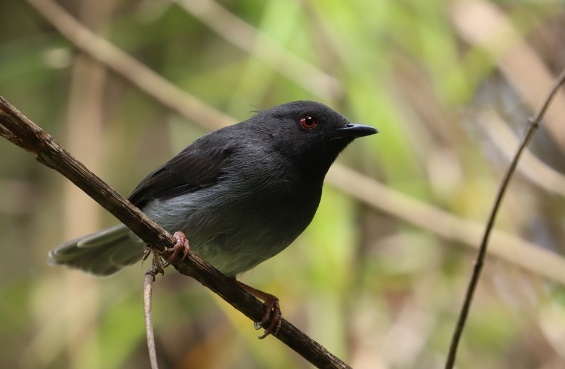
|
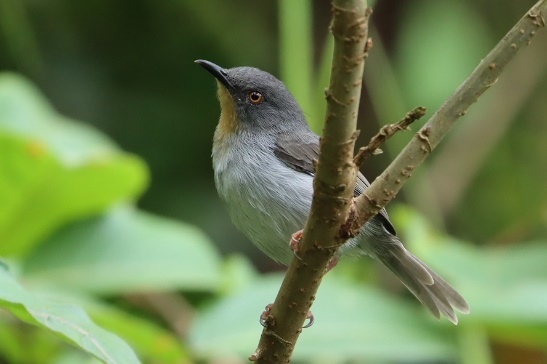
|
| Sharpe’s Apalis (Male and female), Nimba. © M. Languy |
|---|
With around forty species, including four endemics, the group of flycatchers and their allies (Tchitrec and Pririts) is well represented.
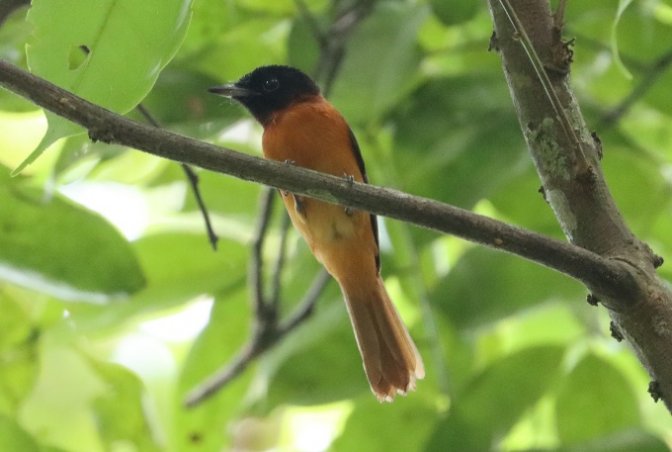
The West African wattle-eye (Dyaphorophyia hormophora) is a tiny black and white bird, barely 10cm long, similar to a flycatcher. It is endemic to the forests of Upper Guinea, found both inside and on the edges of forests. The male can be recognised by the greyish wattles around its eyes, while the female has a hazel-brown breast.
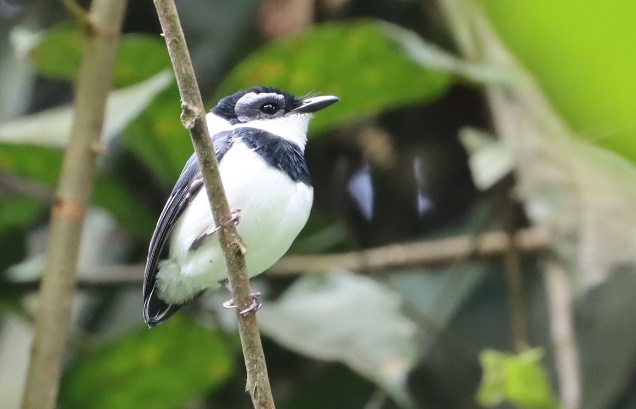
The Ploceidae include weaverbirds, malimbes and euplectes. These species are essentially seed-eaters and fruit-eaters.
Among this group, the Gola malimbe, also known as Ballmann’s malimbe (Malimbus ballmanni), is a forest weaver with a very restricted distribution. It is found almost exclusively in Liberia, with a few outliers in the far east of Sierra Leone, southern Guinea and western Côte d’Ivoire. But even in this restricted range, it can only be found in a few well-preserved forests, such as the Gola, Sapo, Grebo-Krahn and Taï National Parks. With fewer than 10 000 individuals worldwide, the species is classified as "near threatened" by the IUCN. Given that it is found in the Gola, Wologizi-Wonegizi-Ziama, Nimba and Tai-Grebo-Krahn-Sapo landscapes, the PAPFor programme is important in preventing its disappearance.
The Gola malimbe has a unique plumage, as it is the only malimbe with black and yellow plumage. It lives in small groups and very often stays in the canopy of large primary forests, more rarely in old secondary forests, which makes it difficult to observe.
